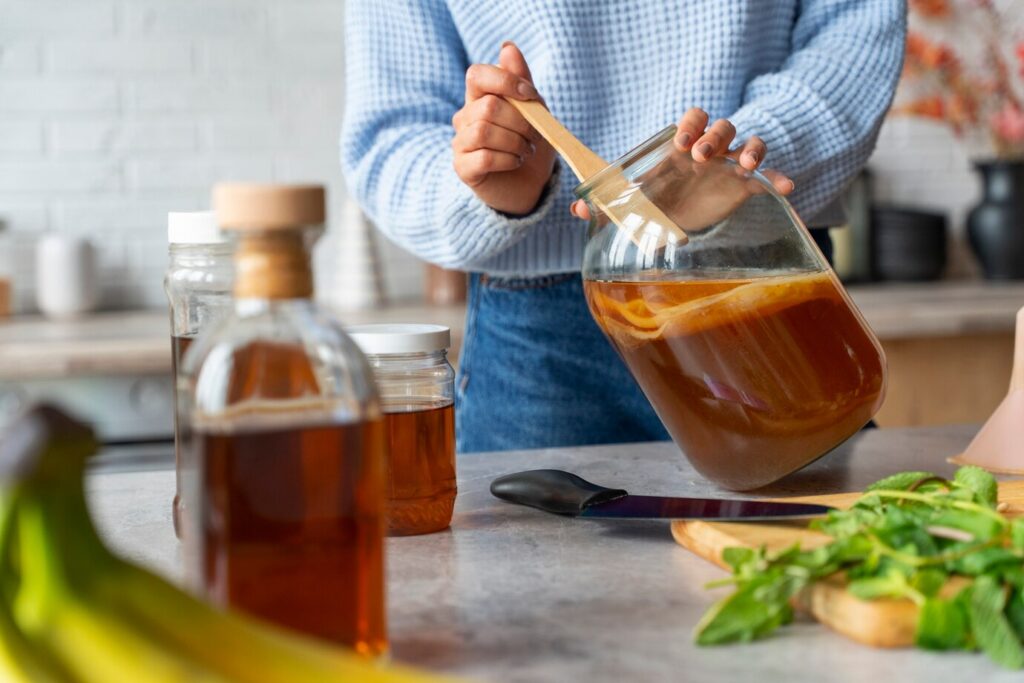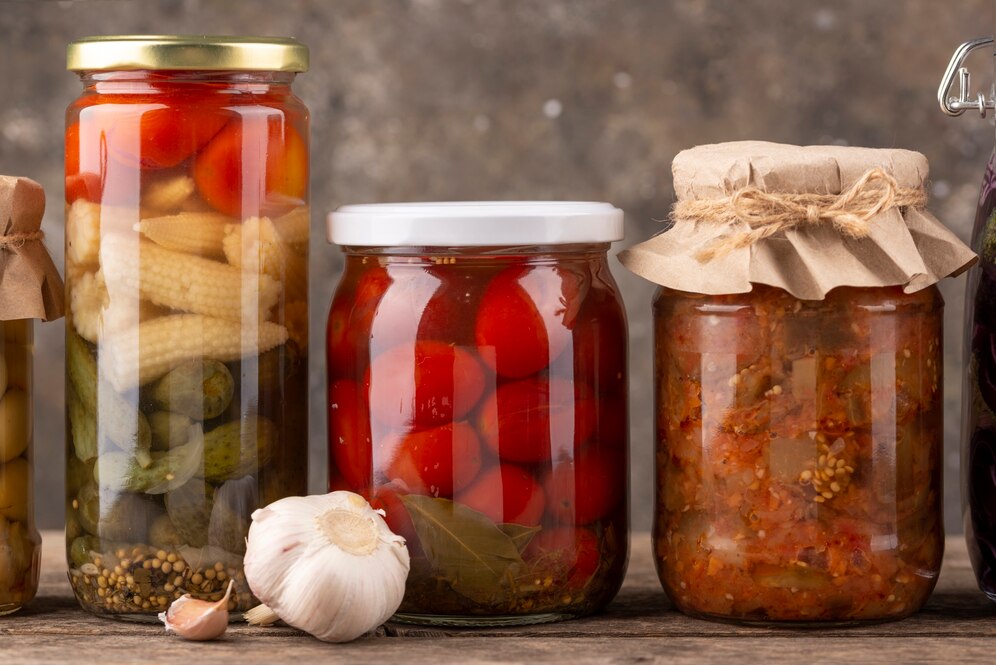The Food Blog

How to Master the Art of Fermentation at Home
Fermentation is an ancient form of food preservation that has established a second wind owing to its wide range of health benefits, unique flavours, and sustainability. From naturally probiotic kimchi to sour, crunchy homemade sauerkraut, getting this fermentation thing down at home helps you whip up health-boosting, umami-laden food while minimizing waste, too. You will find a Foolproof Guide Here, designed to lead you through the exact steps of successful home fermentation globally deliciously safe.
Core Concept of Fermentation

Fermentation is a metabolic process in which microorganisms like bacteria, yeast, and mould break down sugars into alcohol or acids, preserving food and enhancing its nutritional profile. The key benefits include:
- Probiotic Benefits – Fermented foods promote gut health by introducing beneficial bacteria that support digestion and immune function.
- Enhanced Flavor – The fermentation process creates complex, deep flavours that improve the taste of various foods.
- Increased Shelf Life – Naturally preserves food without artificial preservatives, making it a sustainable way to store food.
- Nutrient Availability – Fermentation enhances the bioavailability of vitamins and minerals, making them easier for the body to absorb.
The fermentation process primarily falls into three categories:
- Lactic Acid Fermentation – Used for vegetables like kimchi, sauerkraut, and pickles. Beneficial lactobacilli bacteria convert sugars into lactic acid, preserving the food and adding its characteristic tang flavour.
- Alcoholic Fermentation – Produces beer, wine, and kombucha. Yeast converts sugar into alcohol and carbon dioxide, resulting in effervescence and flavours..
- Acetic Acid Fermentation – Used for vinegar and some types of kombucha. Acetobacter bacteria convert ethanol into acetic acid, creating vinegar’s sharp taste.
Step-by-Step Guide to Home Fermentation
1. Choose Your Ingredients
- Select fresh, organic vegetables, dairy, or grains for the best results.
- Avoid using chemically treated produce, as pesticides can hinder fermentation by killing beneficial bacteria.
- Use high-quality, non-iodized salt, such as sea salt or kosher salt, to promote microbial activity without interfering with fermentation.
2. Prepare Your Equipment
- Use clean, sterilised glass jars or ceramic fermentation crocks to prevent contamination.
- Opt for non-metallic utensils, as metals can interfere with the fermentation process.
- Have a fermentation weight (like a glass weight or a cabbage leaf) to keep ingredients submerged and prevent spoilage.
3. Create the Brine
- Mix salt with water to create an environment that promotes beneficial bacterial growth while preventing harmful pathogens.
- Common brine ratio: 2-3% salt to water for vegetables like cucumbers and cabbage.
- Ensure you dissolve the salt completely before pouring it over the ingredients.
4. Pack and Submerge
- Tightly pack your ingredients into the jar, ensuring they are fully submerged in brine to prevent oxidation and spoilage.
- Use a weight or fermentation lid to keep everything under the liquid surface.
- Ensure there are no air pockets, as oxygen exposure can lead to mould formation.
5. Fermentation Time
- Store in a cool, dark place (18-22°C) for 3-14 days, depending on the recipe and desired flavour.
- Check daily for bubbles which are signs of active fermentation.
- Taste periodically, adjusting the fermentation time to match your preferred level of tanginess.
6. Taste and Store
- Sample your fermented food after a few days to determine if the taste meets your preference.
- Once ready, move it to the refrigerator to slow fermentation and preserve flavour.
- Store in airtight containers to maintain freshness.
Pro Tips for Successful Fermentation
- Use Filtered Water — Chlorinated tap water can interrupt fermentation by killing beneficial microbes.
- Control Temperature – Ideal fermentation occurs between 18-22°C; excessive heat yields over-fermentation, whereas its low temperatures slow fermentation.
- Label Your Jars – Graduate the start date and kind of fermentation,n so you keep tabs on it.
- Burp Jars if You Have to – Let excess gas out in sealed containers to avoid just that situation and bursting jars.
Understanding Fermentation Challenges
Mould vs. Kahm Yeast
- Mould (fuzzy, colourful growth) – Unsafe; discard the batch.
- Kahm Yeast (thin white film) – Harmless; can be skimmed off.
Odour and Colour
- Fermented foods should have a tangy aroma, not a foul or rotten smell. Discolouration or foul odour indicates spoilage and should be discarded.
Salt-to-Water Ratio
- Incorrect ratios can lead to spoilage or overly salty results.
- Adjust according to the type of fermentation and taste preferences.
Best Practices & Additional Insights
- Experiment with different vegetables, spices, and fermentation durations to create unique flavours.
- Try small-batch fermentations to refine techniques and prevent waste.
- Join fermentation communities online for troubleshooting tips and inspiration.
- Incorporate fermentation into daily meals by using fermented vegetables in sandwiches, salads, or condiments.
FAQs
Q: How long does fermentation take?
A: It depends on the food type and temperature. Kimchi and sauerkraut typically take 3-14 days, while kombucha may take 7-14 days.
Q: Why is my fermentation not bubbling?
A: Cooler temperatures or lack of active bacteria may slow fermentation. Ensure your environment is warm enough and use fresh ingredients.
Q: Can I use table salt?
A: It’s best to use non-iodized salt, like sea or kosher salt, as iodine and anti-caking agents can inhibit fermentation.
Q: How do I know when my ferment is ready?
A: Taste is the best indicator. It should have a pleasant tangy or sour flavour without bitterness or off-putting odours.
Q: Can I ferment fruits?
A: Yes! Fermented fruits like pineapple, apples, and berries make great probiotic-rich snacks or drink additions.
Master the Art of Fermentation

Home fermentation is an incredible skill: it gives texture to your diet, and you can enjoy homemade probiotic food. When done with a little bit of technique and safety in mind, it’s easy enough to make tasty, gut-nourishing ferments in your own kitchen. Following this guide will help you not only preserve food for the leaner months but also access depths of flavour and nutrition in your food like never before. So whether you’re fermenting sauerkraut or kombucha or pickles, each ferment you try will get you one step closer to perfecting the art of fermentation!









